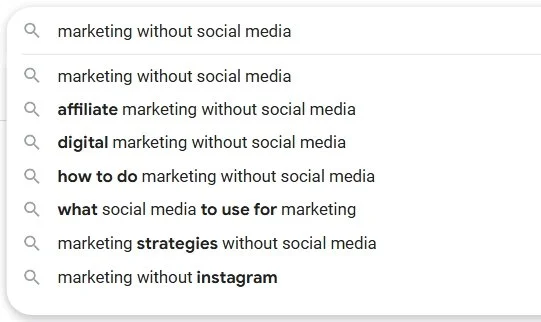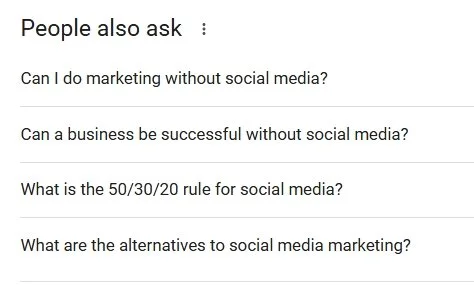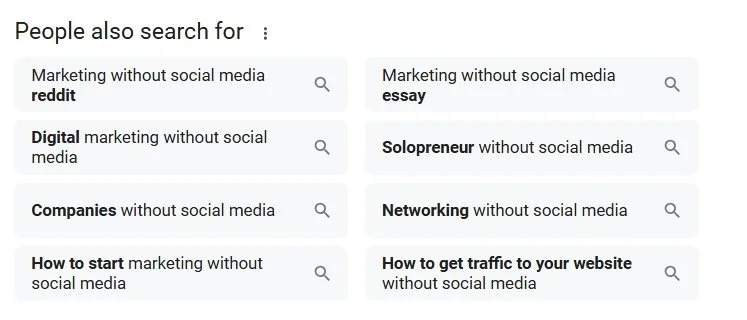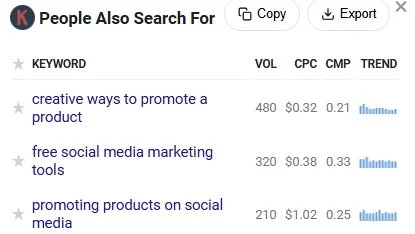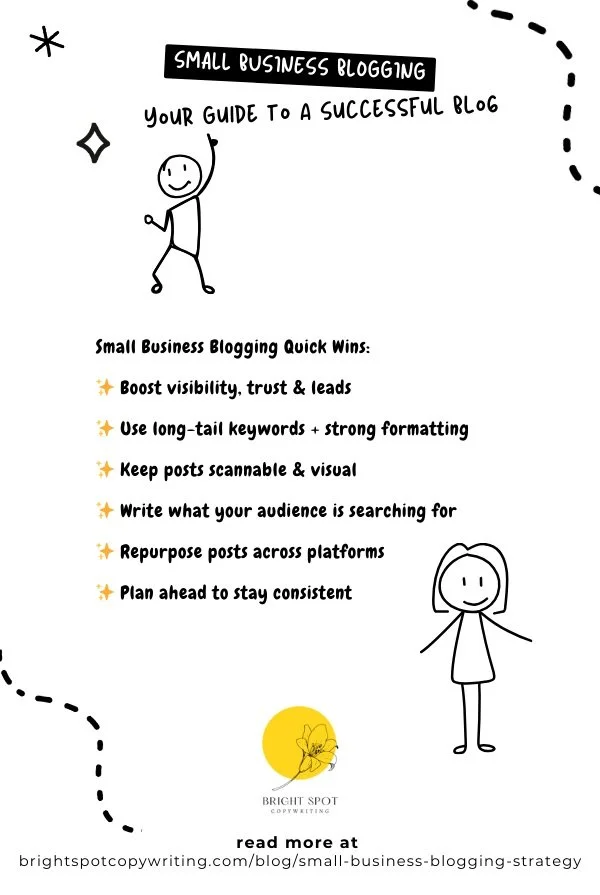Small Business Blogging: Your Guide to a Successful Blog
Blogging is an underrated and powerful marketing tool. Your blog helps aligned leads find you while building brand visibility and industry authority. And, no expensive ads are required.
A blog that delivers fresh, relevant content is your 24/7 marketing sidekick. And this gives you the time you need to focus on the high-level strategic thinking that grows your business.
With that said, many small businesses’ blogging today struggle to reach the right people.
They don’t start because they get stuck asking themselves, What do I even write about? How do I know people will actually find my content? How will I know if they like it? And how do I stay consistent with it — because, you know, life happens?
In this guide, I’m walking you through a simple strategy to create a high-performing blog (aka your 24/7 marketing sidekick). One that boosts your visibility and gets you real results — without burning you out.
1. Why should I start a blog?
Your blog is essential for business growth. Here’s why:
Small business blogging builds brand awareness
Your blog helps position your business as the trusted expert in your industry. With a clear strategy, potential leads will find your content first when they search Google for answers related to what you do.
This is exactly how I found my copy coach, Belinda Weaver.
Years ago, I remember searching for a resource to help with pricing my copywriting services. At the beginning of Bright Spot Copy, I could see that pricing my services (for the first time) was a hurdle, and I needed a quick-action solution.
I did a Google search for pricing copywriting services, which led me to Belinda’s post on how to quote for copywriting services. It was exactly what I needed! Her post answered the exact questions I had about hourly vs project billing, and helped me get a sense of starting rates I felt good about.
Belinda’s blog post was so immediately helpful that I ended up buying two of her resources on the spot.
*affiliate links
All thanks to one blog post that gave me an actionable answer to a problem I had!
Blogging improves SEO & organic traffic
Websites with active blogs have 434% more indexed pages and 97% more inbound links (backlinks) than those without. This means that, with a blog, you rank higher in search engines and increase your brand’s visibility over time.
When you publish new, SEO-optimized content, you increase your chances of the right-fit people finding you first.
Just like how I found my copy coach, Belinda. 😉
Blogging generates leads & builds trust
People buy from brands they trust.
When there’s no trust, there’s no sale.
It’s as simple as that.
Sharing content that gives readers valuable insights nurtures quality relationships. The more helpful your content, the more likely your audience is to turn to you when they’re ready to take action on a problem.
Companies that blog produce an average of 67% more leads than those that don’t. And that’s poof that consistent, high-value content not only attracts but also nurtures the right-fit leads.
Plus, people get to know, like, and trust you a whole lot faster.
2. Simple SEO: How to have a successful blog
Keyword research basics
If you want people to find your blog, you need to write about topics they’re already searching for.
It’s exactly like when I was facing my pricing problem and a quick Google search landed me on a blog post that gave me the answer!
Use these free tools to help you find relevant keywords:
Google Autocomplete – Start typing a phrase related to your business and see what Google suggests.
For example, when I type the term marketing without social media in Google’s search bar, I see similar phrases, like affiliate marketing without social media, digital marketing without social media, and so on. This tells me these would be excellent relevant keywords to use in a post!
Google’s “People Also Ask” Section – Find related searches for blog topic inspiration.
Sticking with my example from above, here’s what people also ask when searching the term, marketing without social media.
Google’s “People Also Search For” Section – Even more keyword and topic ideas! You’ll find this section at the very bottom of the first page of search results. And guess what? This one’s my hidden gem for finding related keywords, ideas, and research.
AnswerThePublic – Find common questions people ask about your industry on Google, Bing, YouTube, TikTok, Amazon, and Instagram (and likely more platforms in the future!).
I did a quick search for marketing without social media on the free version, and it gave me results similar to those I got using Google Autocomplete.
With the free version of AnswerThePublic, the data is limited, but it does a great job at distilling the information so it’s easy to understand.
Since AnswerThePublic gives keyword data for multiple platforms, it could be useful if you’re publishing content in a lot of places — you’ll need the paid version to get the most helpful results, though.
Keywords Everywhere – This one’s my favorite keyword search tool, and I use it any time I do SEO copywriting or content writing. It’s affordable, fast, and delivers!
Keywords Everywhere gives you data on monthly search volume, keyword difficulty, related keywords, and more.
When I search the term marketing without social media, I get details, like the keyword’s monthly search volume and difficulty.
I also get to see data on what people are also searching for, related keywords, and long-tail keywords.
AND it only costs me about $15 per year (depending on how often I’m using it)!
🟡 Quick Tip: To rank higher for your ideal clients, focus on using long-tail keywords (e.g., "best SEO tips for small businesses") instead of competitive short-tail keywords (e.g., "SEO tips").
On-page SEO must-haves
Title Tags & Meta Descriptions – Write compelling, keyword-rich headlines and descriptions for higher click-through rates.
Headers & Formatting – Use H1, H2, and H3 headers to structure your content both for easy-reading and SEO.
Internal Linking – Link to your relevant blog posts for a better user experience as well as higher search rankings and conversions.
How often should a small business blog?
Posting once a week is ideal, but if that feels overwhelming, one post per month will also increase your site’s traffic.
Although there’s no hard-and-fast rule on how often to post content, HubSpot suggests that if your blog isn’t at least a year old, you should aim to publish 6 - 8 posts a month around a few important topic clusters aligned with your brand.
🟡 Quick Tip: Publishing one high-quality post per month is more effective than publishing 20+ low-quality posts a month.
3. Blogging strategy: Formatting for readability & engagement
Make your posts scannable
Most readers scan instead of read web pages word-for-word. This means that a great blogging strategy is to improve the readability of your blog.
Instead of posting large chunks of text, you can improve readability by:
Using short paragraphs (2-3 sentences max)
Adding subheadings, bullet points, and bold text
Breaking up walls of text with whitespace
Write strong introductions
Your opening lines should grab the reader’s attention, and let them know they’re in the right place.
If you feel stuck on writing a strong opener, here are some ideas for you!
Start with a:
Surprising statistic – “Did you know 80% of blogs fail due to inconsistency?”
Compelling question – “Struggling to get traffic to your blog? Here’s what might be missing.”
Quick story – “When I started my blog, no one read it. Here’s how I turned things around.”
Add visuals
Headshots, stock photos & custom graphics to make your blog posts appealing.
Infographics to turn key points into shareable visuals.
Videos & GIFs to boost engagement and time on page.
CTA (Call-to-Action) placement
Each blog post should guide readers to the next step toward working with you.
Whether it’s subscribing to your newsletter or downloading a resource, make your CTA clear and actionable.
🟡 Get more tips like this with my free 3-part mini course: How to have a successful blog (without being a blogging expert!).
4. Get blog ideas with user intent: Write content your audience actually wants to read
Understand your audience’s needs
The best blog content solves real problems.
Find out what your audience wants by:
Reading social media comments
Studying competitor blogs
Checking customer FAQs
Types of high-performing content
How-To guides & tutorials that teach your audience step-by-step solutions.
Listicles, like “10 Ways to Improve Your Website’s SEO.”
Case studies & success stories to show how your product or service delivers results.
Behind-the-scenes posts that give readers a peek into your business journey.
SEO & Content Alignment
Before you write, make sure your blog topic matches search intent.
The four types of user intent are:
Informational – People who want answers (e.g., “What is SEO?”).
Navigational – People who are looking for a specific brand or solution.
Commercial – People who are researching products or services before buying.
Transactional – People who are ready to buy or complete an action (e.g., “Best SEO tools for small businesses”).
5. Repurpose & promote: Getting the most from each blog post
Repurpose content for different platforms
Turn blog posts into social media captions.
Pull out key takeaways for email newsletters.
Republish a post on LinkedIn or Medium for extended reach.
Promotion strategies to increase visibility
Share posts where your audience hangs out, like LinkedIn, Instagram, Pinterest, X, etc.
Use Pinterest to drive blog traffic (create pinnable images with descriptions).
Send an email newsletter with a blog teaser and link to read more.
Put a link to your latest post in your email signature.
Encourage engagement & shares
To encourage engagement and shares, end each post with a question to start a conversation in the comments.
Add social sharing buttons to make sharing high-value content easy.
6. Next steps: How to keep up with blogging without overwhelm
Plan ahead with an editorial calendar
Choose 1 - 2 blog post ideas per month and schedule them on your calendar in advance, so they’re ready when you’re ready.
Use tools like Asana, Notion, or Google Sheets to track content ideas.
Know when to outsource
If blogging feels overwhelming, consider hiring a content marketing strategist to help you find aligned topics and stay consistent.
Quality content is an investment that helps grow your business behind the scenes!
Build a successful blog that nurtures your marketing 24/7
Although you can experience quick wins with blogging, it’s really a long-term strategy.
It helps you build trust, drive traffic, and generate the right leads — and it’s most effective when done strategically.
Whether you’re starting or improving an existing blog, taking small steps toward consistency pays off.
Feeling stuck on where to start?
Subscribe to my free 3-part mini course on how to build a successful blog.
Here’s a peek at the lessons…
🟡 Lesson 1: Why blogging is your marketing sidekick.
🟡 Lesson 2: My top 7 tips to make blogging way easier.
🟡 Lesson 3: How to know if your blog is working using analytics.
You’ll also get my blog SEO checklist (updated yearly!) with the latest SEO trends to help your business stay visible online.
I can’t wait to help you make the most of your blog, so you have the 24/7 marketing sidekick (and content ecosystem) you’ve been ready for!
And if you need a professional content strategist + writer on your team, I’m happy to help!


